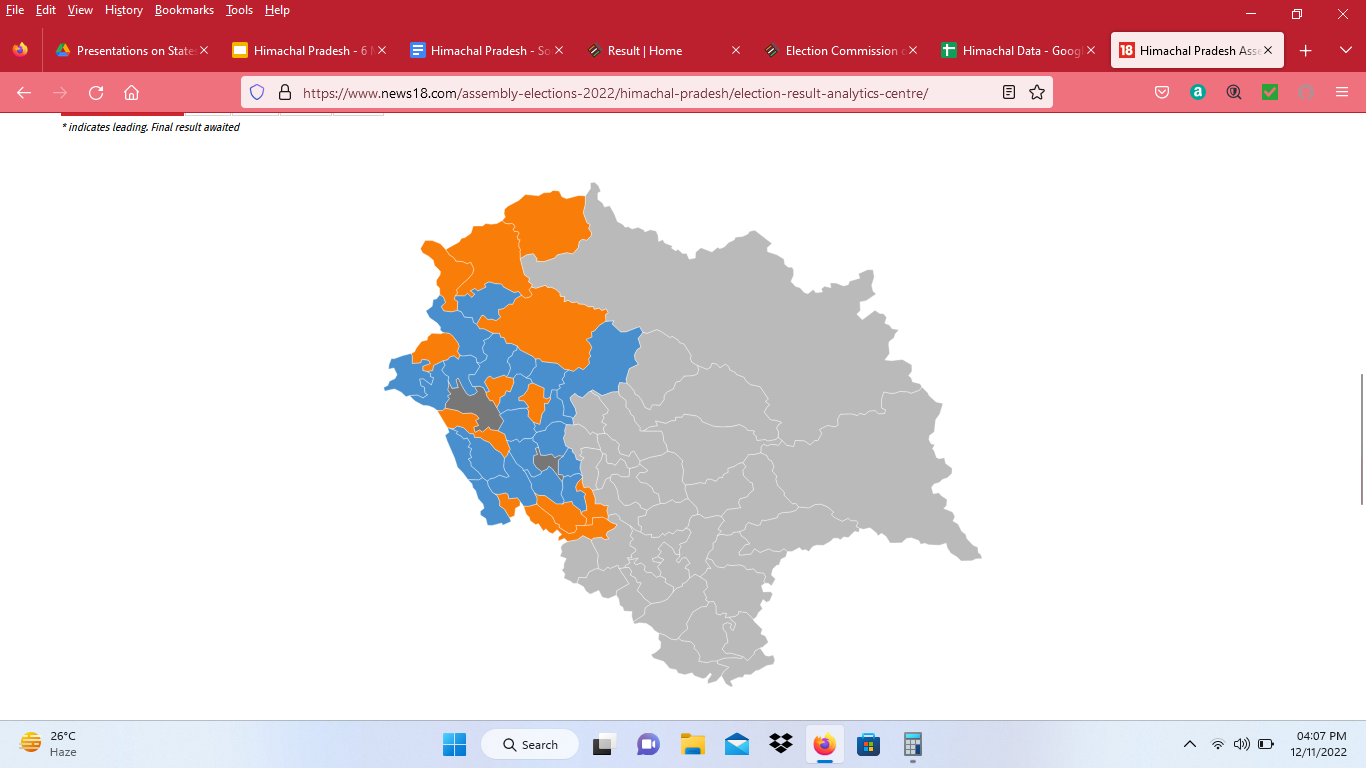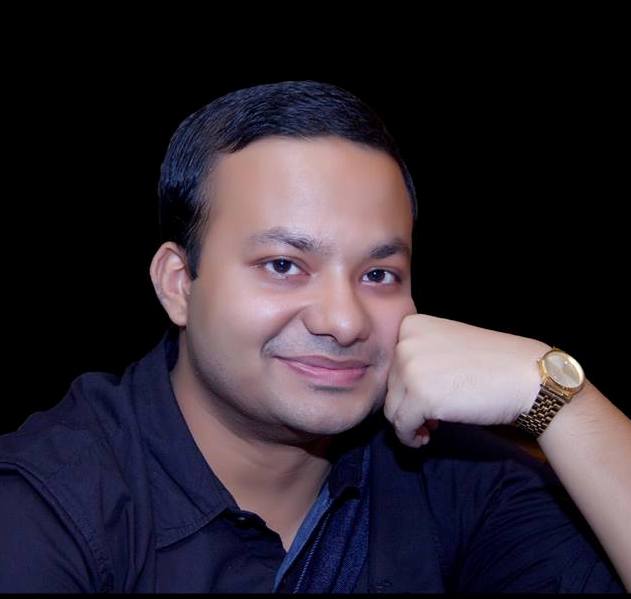Himachal Pradesh- Some Old, Some New, and Things to Watch Out For
- In Politics
- 08:10 AM, Dec 12, 2022
- Rohit Pathania
The recently concluded Himachal Pradesh elections were a rather close fight for both the Bharatiya Janata Party (BJP) and the Congress for a variety of reasons. With the eventual swearing-in of Sukhwinder Singh Sukkhu as the Chief Minister of Himachal Pradesh, a generational shift for Himachal’s politics away from the Virbhadra Singh-Prem Kumar Dhumal-Shanta Kumar era has been completed in some ways. Of course, a variety of things did turn up from these elections that make observers realise the rather interesting turn of events - for good and bad - that have created a buzz in the state and the nation simultaneously.
Slim Margin - Impact of OPS?
There is a lot of chatter over the impact of the Old Pension Scheme (OPS) on the outcome of the elections. This discussion has become even more important when one sees that the outcome difference between the winning Congress and the losing BJP is just 37,974 votes. Much is being made of the OPS announcement that the Congress announced at the last minute. Of course, it is a worthy claim, given the huge number of government employees in the government/state-owned enterprises and the various schemes. There had been a movement going on within the state for a few years around the OPS restoration among a section of government employees for sure.
However, OPS is just one side of the story and leads to ignorance of the impact of the rebels. While this is typical of small population states where even 100 votes cause a massive shift, the fact is that the third front candidates/parties and independents, consisting of a large number of BJP rebel candidates, took away more than 4.38 lakh votes. This problem continues to plague the BJP, which was witnessed earlier in 2012 when the rebels damaged BJP to take it below the 40% mark at that time. In fact, an observation of the past and present trends seems, to suggest that it is the BJP more than the Congress that suffers from the rebel factor. It was that very reason that the BJP had made extra efforts to control rebels like Maheshwar Singh of Kullu in 2017, due to which the impact was evident in the final numbers (Table 1).
Table 1: The Rebel Factor’s Impact on the BJP is Evident in Recent Assembly Election Outcomes
|
Year |
BJP Vote Share |
INC Vote Share |
Independents/Others |
|
2022 |
43.00% |
43.90% |
10.40% |
|
2017 |
48.79% |
41.68% |
6.34% |
|
2012 |
38.47% |
42.81% |
12.14% |
Source: Election Commission of India Data
The Lower Himachal Losses Hurt BJP, Especially Due to Rebels
Despite the rebels, the BJP still got 43 percent of the votes polled in the state. This actually shows how the sentiment was not necessarily anti-BJP in the traditional sense. There was no real anti-BJP wave in the state, and the anti-incumbency in the way the past trends showed would not have reflected had the rebel factor not surfaced. The incidents of rebel candidates like Hoshyar Singh and Kirpal Parmar were truly reflective, where they did not accuse the party but called out Anurag Thakur and Jagat Prakash Nadda specifically as the cause of their exit from the party. That one of them - Hoshyar Singh - also won by creating a three-cornered contest raises questions on the role played by the two camps within the state.
Seats were lost in the lower Himachal areas of Kangra, Hamirpur by the BJP. These places, considered traditional strongholds, have been impacted by rebel candidates and a perceived sense of disaffection among the people. Of course, the disaffection was also capitalised by one-time Dhumal confidante turned nemesis Rajender Singh Rana, who had defeated Prem Kumar Dhumal in 2017 as well. Thanks to him, Hamirpur’s 4 of 5 seats went to the Congress.


Figure 1: 2022 vs 2017 results show the BJP losing face in Himachal (courtesy News18)
On looking at the lost seats, the refrain of rebels is certainly a problem. However, it is being widely discussed among people that the candidate selection process in the lower Himachal region was deliberately sabotaged by the Nadda faction to weaken the Dhumal faction. Factionalism is definitely not a new issue for the party or the state, as even the Congress has been hurt by it in the past. However, with open talk of sabotage, there is certainly a loss of face for the BJP within the state and nationally, given how Prime Minister Narendra Modi himself has been associated with the state unit’s election campaigns in the past. Henceforth, the focus will have to be on recovering the lost ground in this area. One of the ways to address this would be the acceleration of the train network expansion, but that remains to be seen.
Addressing Other Issues to Balance Out Discontent
What BJP would however also want to do is to assuage a level of discontent among the savarnas of the state, which essentially are dominant numerically and electorally. This is where the question of jobs, of which the Agniveer scheme controversy also became a sore sub-point, did rub the people the wrong way. Agniveer-related discontent seems to have been a factor in parts of lower Himachal, where armed force jobs are coveted and seen as a way out of a life of hardships even today.
The announcement of ST status for Hattis in the midst of the anger on the lack of jobs added to the discontent, especially at a localised level in upper Himachal’s pockets. This move, in particular, did not sit well with the Scheduled Castes of the state, who chose the Congress over the BJP as per data released by Today’s Chanakya. This factor clearly was important, given how the fight was perhaps evenly balanced among other social groupings (Table 2). Given the evenness on the ST votes, it is the SC vote which may have ended up playing a crucial role.
Table 2: SC Vote was the Deciding Factor
|
Social Grouping |
BJP |
Congress |
|
Brahmin |
43% |
36% |
|
Rajput |
47% |
37% |
|
SC |
30% |
51% |
|
ST |
43% |
42% |
|
OBC |
49% |
40% |
(Source: Today’s Chanakya)
Congress’ Headaches Have Just Started
What can definitely be promised by the Congress is a lot of fireworks for the next couple of years. Any addition to two years in terms of a government that survives will be seen as a bonus. Sukhwinder Singh Sukkhu and Pratibha Singh’s fight was rather ugly despite the camera poses. The party high command tried to appease both by making Mr. Sukkhu the Chief Minister while accommodating Ms. Singh’s second choice, Mukesh Agnihotri, as the Deputy CM.
Mr. Sukkhu enjoys the confidence of the high command, especially the Gandhi family unlike Mrs. Singh and her son Vikramaditya. Even within the state unit, it is Mr. Sukkhu who has greater popularity, particularly so among the elected MLAs. However, the old legacy of the state, especially upper Himachal, thanks to Virbhadra Singh, may translate into increasing pressure on the government. There will be more than one attempt to dislodge Mr. Sukkhu as the Chief Minister if the experience of Thakur Ram Lal vis his party peer Virbhadra Singh is anything to go by.
What is rest assured is that Mrs. Singh remains the state unit’s president. Interference and contrarian pull within the government are going to be visible to all within the state. There may even be pressure to replace the CM at some stage, failing which the party might fall apart one way or the other. This will make it difficult for the state government to focus on delivering on its promises in particular.
Image source: Tribune India



























Comments